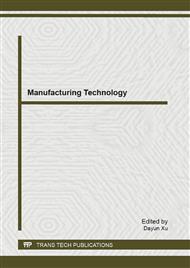p.396
p.402
p.409
p.414
p.420
p.425
p.431
p.439
p.446
Teratogenicity Assessment of Dental Implants
Abstract:
To evaluate the teratogenicity of the dental implant and provide a basis for safe applications of medical products. Chromosome aberration test, micronucleus test and the Ames test of the dental implant samples were performed. The results showed that samples of the dental implant did not cause chromosomal aberrations, nor induced the increase of bone marrow cells micronucleus incidence; Compared with the control groups, the number of revertant colonies did not increase significantly in the dental implant extracts and 1/5, 1/25 diluted groups, both under the activation and non-activation conditions, suggesting that no mutagenic effect was caused by the dental implant samples. All of the results indicated that the dental implant could not induce any teratogenic toxicity or carcinogenic and toxicity, so the dental implant can be safely used in clinical practice.
Info:
Periodical:
Pages:
420-424
Citation:
Online since:
December 2012
Authors:
Price:
Сopyright:
© 2013 Trans Tech Publications Ltd. All Rights Reserved
Share:
Citation:


